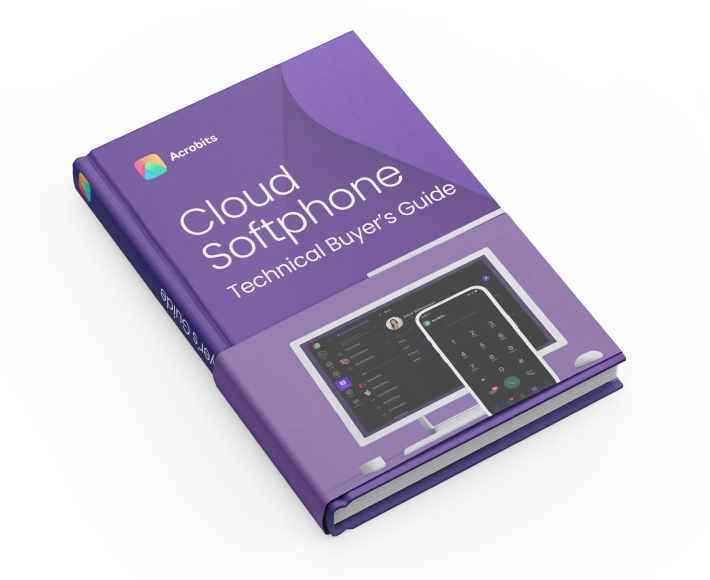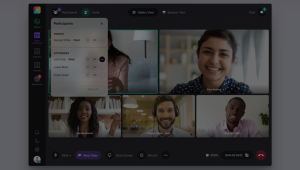
The telecommunications market is growing increasingly competitive as alternatives to traditional services give businesses and consumers new communication methods or cheaper options.
Maximizing your revenue is critical to maintaining consistent revenue growth and remaining competitive by offering in-demand services.
You don’t need to monetize for monetization’s sake; monetization attempts can harm the customer experience if not done well. Instead, explore monetization strategies that open new revenue streams, enhance the customer experience, and create a competitive advantage.
Fortunately, there are plenty of unique ways to leverage your white-label Cloud Softphone app to attract and retain more customers while increasing every user’s revenue potential. Read on to learn some excellent strategies we’ve seen and consider how you might apply them.
A cloud softphone provides customers with a better experience than legacy communication technologies by offering a feature-rich and cross-platform web-based experience.
However, while a barebones softphone is still a meaningful upgrade for many users, exploring ways to maximize revenue while providing a better customer experience can go far in growing revenue and customer retention.
So let’s dive into specific strategies to monetize your softphone further — which ones might work for you?
Creating tiered pricing plans is a common strategy to maximize value and meet the needs of different types of customers. You can find it in so many services because it works.
However, you often see pricing tiers that offer the same general pricing structure, with differing rates and features when you pay more. That’s a tried and true way to go, but other options to consider are:
Depending on your specific industry and use case, there might be other ways you can cater to your target market. Remember the time-tested pricing strategies, but don’t restrict yourself to them.
Equipping your cloud softphone with eSIMs creates added utility for your softphone app to operate beyond an Internet connection or existing cell services. An eSIM is a software-based SIM card rather than a physical card, which is traditionally required.
With an eSIM, users can activate a cellular plan without waiting for a physical SIM or go pick it up at a store. This difference creates more flexibility and adaptability for those who need a quick option for getting up and running on the same day.
Your organization can add eSIMs onto an existing softphone app so they’re available when needed. Using them represents additional costs and creates an entirely new source of revenue.
The hospitality industry has several powerful ways to customize a white-label softphone to meet the specific needs of guests and customers. Everything from hotels to trains can offer customers an app, which then gives them access to a range of services to help increase revenue, such as:
How are these integrated with a softphone? Web views, or web tabs, which can pull content from your website allow for a variety of unique capabilities well beyond what’s typically available.
Offering these services can directly increase revenue from guests as making it easier to use services increases the cost of their stay. Additionally, your unique softphone creates a competitive advantage over other options.
Your industry may allow you to come up with unique or specialized capabilities that cater to the needs of your customers. A single unique feature might set you apart from other options when potential customers are weighing options.
We explored some ways this might look earlier with hospitality, but most industries can likely explore ways to offer specialized features. For example, specific users can have a panic button that alerts specified parties about an issue. This feature can be extremely valuable for cybersecurity teams and other teams involved in business continuity.
Focusing on innovation alongside monetizing can go far in appealing to those with specialized needs. Other possibilities to consider include the following:
Offering unique features also lends itself to different pricing tiers or models. You can offer a more barebones option for those who need it, then the specialized features at higher tiers.
Web view enables many of the above examples — it’s a method of integrating web browsing directly in your cloud softphone. It’s similar to web tabs in a browser, letting users manage a variety of tasks easily.
Let’s quickly explore a few other ways you can put this capability to work to generate more revenue:
Every above strategy focuses on what you do with a softphone app to monetize your platform. However, you can also add cloud softphone to an existing product or service to give users additional utility. Some examples of how this might look are:
Cloud softphones create a flexible, cross-platform way for users to communicate. Would your customers appreciate the option for a cloud softphone?
Everything we explored above begins with a white label cloud softphone app with a high degree of flexibility and customizability. Otherwise, you’ll need to build a complex app and the infrastructure internally.
Fortunately, you can leave that up to us — Acrobits is a leading developer of robust white label telecommunications solutions. Our cloud softphone can adapt to your specific needs, with our web tab feature enabling many of the capabilities we explored above.
Are you ready to offer a unique, competitive cloud softphone? Book a demo and see how our products start you off with a major head start.

Communication tools are vital for organizations of any size in all industries. Small businesses may only have one or two, while enterprises may have a variety of different tools to provide an omnichannel experience. Maintaining consistent branding can do wonders for your operation regardless of business size. You’ll avoid confusion, build brand recognition, and ultimately […]

The customer experience (CX) has become increasingly crucial in most industries. When a business or consumer needs to decide between your business and your competitors, customer experience is often the deciding factor. CX influences return visitors and impacts new customers by informing them what they’ll hear about you from others. From traditional word of mouth […]

We’re all about helping our customers and partners better understand how to drive the most value out of Cloud Softphone, whether that’s exploring new features or highlighting what’s on the horizon. That’s why Acrobits recently launched our new Tech Tips Webinar series to demo recent features, showcase customer use cases, and discuss what we’re working […]

In today’s world, where many are working remotely, having a collaboration tool is essential. However, it also needs to make financial sense for businesses looking to make the switch. UCaaS solutions provide a lot of value, whether that’s through keeping teams productive, engaged, or connected. They also eliminate resources being wasted on other applications and […]